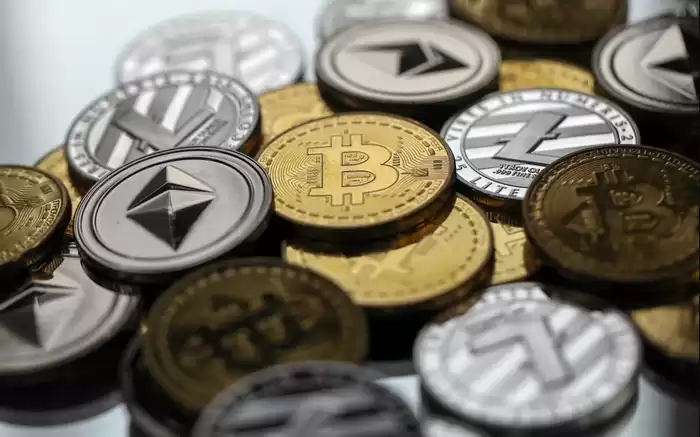-
 Bitcoin
Bitcoin $115800
-2.47% -
 Ethereum
Ethereum $3690
1.19% -
 XRP
XRP $3.105
-1.91% -
 Tether USDt
Tether USDt $0.9999
-0.07% -
 BNB
BNB $771.0
0.19% -
 Solana
Solana $179.9
-3.54% -
 USDC
USDC $0.9998
-0.03% -
 Dogecoin
Dogecoin $0.2291
-3.40% -
 TRON
TRON $0.3140
0.81% -
 Cardano
Cardano $0.8007
-1.24% -
 Hyperliquid
Hyperliquid $42.92
-0.44% -
 Stellar
Stellar $0.4212
-2.16% -
 Sui
Sui $3.730
0.03% -
 Chainlink
Chainlink $18.06
0.03% -
 Bitcoin Cash
Bitcoin Cash $546.6
5.08% -
 Hedera
Hedera $0.2438
0.55% -
 Avalanche
Avalanche $23.57
-0.81% -
 Litecoin
Litecoin $114.2
1.04% -
 UNUS SED LEO
UNUS SED LEO $8.970
-0.35% -
 Shiba Inu
Shiba Inu $0.00001363
-0.16% -
 Toncoin
Toncoin $3.136
-0.89% -
 Ethena USDe
Ethena USDe $1.001
-0.04% -
 Uniswap
Uniswap $10.30
1.42% -
 Polkadot
Polkadot $4.013
-0.06% -
 Monero
Monero $324.8
0.87% -
 Dai
Dai $0.9999
-0.04% -
 Bitget Token
Bitget Token $4.509
-1.38% -
 Pepe
Pepe $0.00001226
-2.60% -
 Aave
Aave $291.8
1.34% -
 Cronos
Cronos $0.1294
2.19%
What Is Stablecoin?
Stablecoins provide less volatility than cryptocurrencies due to their pegging to fiat currencies, making them more suitable as a medium of exchange.
Oct 28, 2024 at 09:33 am

What is Stablecoin?
Stablecoins are a type of cryptocurrency that is designed to maintain a stable value relative to a fiat currency such as the US dollar or the euro. This is achieved by pegging the stablecoin's value to the value of the fiat currency, and backing it with assets such as cash, cash equivalents, or other fiat currencies.
Stablecoins offer a number of advantages over traditional cryptocurrencies, such as Bitcoin and Ethereum. First, stablecoins are less volatile than traditional cryptocurrencies, making them more suitable for use as a medium of exchange. Second, stablecoins are often pegged to a fiat currency, which makes them more accessible to a wider range of users. Third, stablecoins can be used to earn interest, which can provide a source of passive income.
How do Stablecoins work?
Stablecoins work by maintaining a reserve of assets that is equal to the value of the stablecoins in circulation. This reserve is typically held by a custodian, which is a regulated financial institution. When a user redeems a stablecoin, the custodian will use the reserve to purchase the fiat currency from the user.
Types of Stablecoins
There are three main types of stablecoins:
- Fiat-collateralized stablecoins: These stablecoins are backed by a reserve of fiat currency, such as the US dollar or the euro.
- Crypto-collateralized stablecoins: These stablecoins are backed by a reserve of cryptocurrency, such as Bitcoin or Ethereum.
- Algorithmic stablecoins: These stablecoins use a feedback mechanism to maintain their value. When the stablecoin's price falls below its target, the algorithm will issue new tokens. When the stablecoin's price rises above its target, the algorithm will burn tokens.
Benefits of Stablecoins
Stablecoins offer a number of benefits over traditional cryptocurrencies, such as:
- Stability: Stablecoins are less volatile than traditional cryptocurrencies, making them more suitable for use as a medium of exchange.
- Accessibility: Stablecoins are often pegged to a fiat currency, which makes them more accessible to a wider range of users.
- Interest-earning potential: Stablecoins can be used to earn interest, which can provide a source of passive income.
Risks of Stablecoins
Stablecoins also come with some risks, such as:
- Counterparty risk: The risk that the custodian holding the reserve of assets will default or be hacked.
- Regulatory risk: The risk that stablecoins will be regulated by governments, which could limit their use or value.
- Volatility risk: While stablecoins are less volatile than traditional cryptocurrencies, they are still subject to some volatility.
Conclusion
Stablecoins are a new and innovative type of cryptocurrency that offer a number of advantages over traditional cryptocurrencies. However, stablecoins also come with some risks. It is important to understand these risks before investing in stablecoins.
Disclaimer:info@kdj.com
The information provided is not trading advice. kdj.com does not assume any responsibility for any investments made based on the information provided in this article. Cryptocurrencies are highly volatile and it is highly recommended that you invest with caution after thorough research!
If you believe that the content used on this website infringes your copyright, please contact us immediately (info@kdj.com) and we will delete it promptly.
- Pump, Bonk, Buyback: A Wild Ride in Crypto Town!
- 2025-07-25 19:10:12
- Punisher Coin, Dogecoin, Shiba Inu: Meme Coin Mania in the 2025 Crypto Landscape
- 2025-07-25 19:10:12
- Celestia's Token Control: Buyback & Staking Overhaul in Focus
- 2025-07-25 19:50:11
- Altcoins, Bitcoin, and Crypto Coins: What's Hot in the NYC Crypto Scene?
- 2025-07-25 19:55:52
- Litecoin Price Breakout Imminent? Rally Potential Explored!
- 2025-07-25 17:30:12
- Ether ETFs Surge, Bitcoin Wobbles: Is an ETH Breakout Imminent?
- 2025-07-25 16:50:12
Related knowledge

What is the difference between CeFi and DeFi?
Jul 22,2025 at 12:28am
Understanding CeFi and DeFiIn the world of cryptocurrency, CeFi (Centralized Finance) and DeFi (Decentralized Finance) represent two distinct financia...

How to qualify for potential crypto airdrops?
Jul 23,2025 at 06:49am
Understanding What Crypto Airdrops AreCrypto airdrops refer to the distribution of free tokens or coins to a large number of wallet addresses, often u...

What is a crypto "airdrop farmer"?
Jul 24,2025 at 10:22pm
Understanding the Role of a Crypto 'Airdrop Farmer'A crypto 'airdrop farmer' refers to an individual who actively participates in cryptocurrency airdr...

What is the difference between a sidechain and a Layer 2?
Jul 20,2025 at 11:35pm
Understanding the Concept of SidechainsA sidechain is a separate blockchain that runs parallel to the main blockchain, typically the mainnet of a cryp...

What is the Inter-Blockchain Communication Protocol (IBC)?
Jul 19,2025 at 10:43am
Understanding the Inter-Blockchain Communication Protocol (IBC)The Inter-Blockchain Communication Protocol (IBC) is a cross-chain communication protoc...

How does sharding improve scalability?
Jul 20,2025 at 01:21am
Understanding Sharding in BlockchainSharding is a database partitioning technique that is increasingly being adopted in blockchain technology to enhan...

What is the difference between CeFi and DeFi?
Jul 22,2025 at 12:28am
Understanding CeFi and DeFiIn the world of cryptocurrency, CeFi (Centralized Finance) and DeFi (Decentralized Finance) represent two distinct financia...

How to qualify for potential crypto airdrops?
Jul 23,2025 at 06:49am
Understanding What Crypto Airdrops AreCrypto airdrops refer to the distribution of free tokens or coins to a large number of wallet addresses, often u...

What is a crypto "airdrop farmer"?
Jul 24,2025 at 10:22pm
Understanding the Role of a Crypto 'Airdrop Farmer'A crypto 'airdrop farmer' refers to an individual who actively participates in cryptocurrency airdr...

What is the difference between a sidechain and a Layer 2?
Jul 20,2025 at 11:35pm
Understanding the Concept of SidechainsA sidechain is a separate blockchain that runs parallel to the main blockchain, typically the mainnet of a cryp...

What is the Inter-Blockchain Communication Protocol (IBC)?
Jul 19,2025 at 10:43am
Understanding the Inter-Blockchain Communication Protocol (IBC)The Inter-Blockchain Communication Protocol (IBC) is a cross-chain communication protoc...

How does sharding improve scalability?
Jul 20,2025 at 01:21am
Understanding Sharding in BlockchainSharding is a database partitioning technique that is increasingly being adopted in blockchain technology to enhan...
See all articles

























































































